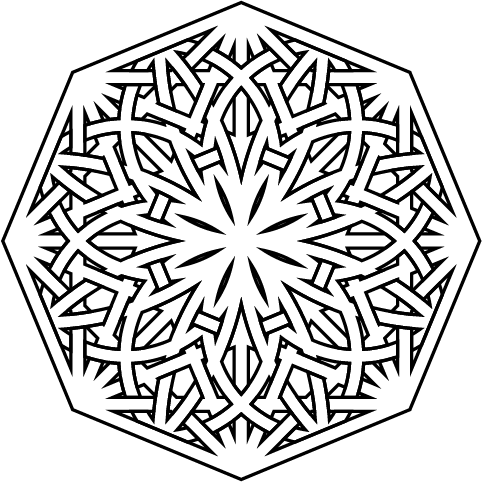4D Shapes
Share
The Hidden Reality of 4D Shapes
A Mind-Bending Journey Beyond the Three Dimensions You Know
Quick Question:
Imagine a 2D being (like a character drawn on paper) trying to understand a 3D cube. They can only see one square face at a time. Now imagine you're that 2D being, but for 4D objects. That's where our journey begins...
The Gateway to the Fourth Dimension

Before we dive deep, let's build your intuition step by step:
Try This Mental Exercise
Step 1: A point (0D) swept through space creates a line (1D)
Step 2: A line swept perpendicular creates a square (2D)
Step 3: A square swept perpendicular creates a cube (3D)
Step 4: Now imagine... a cube swept perpendicular into a dimension you can't see creates... a tesseract (4D)
This isn't science fiction — it's pure mathematics, and it's been studied for over 150 years. Just as there are exactly 5 perfect 3D shapes (the Platonic solids), there are exactly 6 perfect 4D shapes.
"Four-dimensional space is not just an abstract concept, but rather an actual reality that is the natural extension of the three dimensions we are familiar with."
— Ludwig Schläfli, who discovered these shapes in 1852
Meet the Six Impossible Shapes
These aren't random mathematical curiosities — they're the only possible regular convex 4D shapes that can exist, proven mathematically. Let's meet them from simplest to most complex:
🔺 The 5-Cell: Baby's First 4D Shape

Think of it as the 4D version of a triangle (or tetrahedron in 3D). It's the absolute simplest 4D shape possible.
🎲 The 8-Cell (Tesseract): The Famous One

The tesseract is to a cube what a cube is to a square. It's probably the most famous 4D shape, appearing in everything from Marvel movies to A Wrinkle in Time.
Mind-blowing fact: Every one of its 16 vertices is connected to exactly 4 edges — one in each dimension!
💎 The 16-Cell: The 4D Diamond
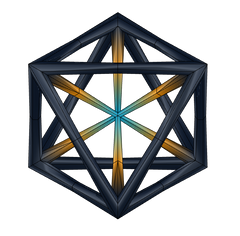
This is the 4D version of an octahedron. Imagine two pyramids joined at their base, then extend that concept into 4D.
Notice how it seems to pulse and breathe as it rotates? That's your brain trying to process 4D information!
⭐ The 24-Cell: The Impossible One
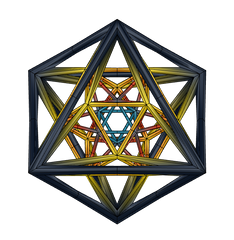
This shape has NO 3D equivalent! It only exists in 4D and higher dimensions. It's made of 24 octahedral cells arranged in perfect symmetry.
🌟 The 120-Cell: The Complex Giant
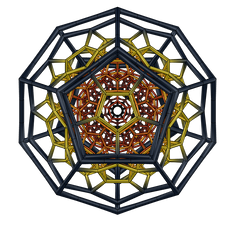
The 4D version of a dodecahedron, made of 120 dodecahedral cells. Its complexity is staggering!
🌌 The 600-Cell: The Ultimate 4D Shape
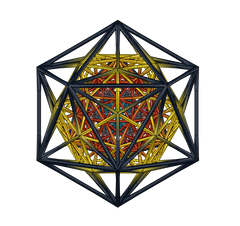
The most complex regular 4D shape — 600 tetrahedral cells creating a structure of mind-boggling beauty.
Fun fact: The 120-cell and 600-cell are "dual" to each other — connect the centers of each cell in one, and you get the other!
How Do We "See" 4D? The Art of Projection

Here's the challenge: We're 3D beings trying to understand 4D objects. It's like asking a drawing on paper to understand a sphere. So how do we do it?
The Shadow Analogy
Hold a cube up to a light. Its shadow on the wall is 2D, right? Now imagine that cube is actually the "shadow" of a 4D tesseract cast into our 3D world. That's projection!
Three Ways to Peek into 4D
1. Perspective Projection
Like looking at train tracks converging in the distance. Objects farther in the 4th dimension appear smaller. This is why a tesseract looks like a small cube inside a large cube.
2. Orthographic Projection
No perspective distortion — like architectural blueprints. Better for understanding true proportions but harder to visualize.
3. Cross-Sections
Imagine slicing through the 4D object with our 3D space and watching how the slice changes as we move through the 4th dimension. A tesseract would appear as a point, grow into a cube, then shrink back to a point!
The Fascinating History: Pioneers of the Fourth Dimension
Did You Know?
The concept of 4D geometry predates Einstein's spacetime by over 50 years!
🎩 Ludwig Schläfli (1814-1895)
This Swiss mathematician discovered all six regular 4-polytopes in 1852, but his work was so advanced that it wasn't published until after his death!
👩🔬 Alicia Boole Stott (1860-1940)
The unsung hero of 4D geometry. With no formal mathematical education, she independently discovered all six regular 4-polytopes using just cardboard models and incredible spatial intuition. She was the daughter of George Boole (yes, Boolean logic Boole!) and coined the term "polytope."
🔮 Charles Hinton (1853-1907)
Coined the term "tesseract" and wrote science fiction about 4D worlds. He believed humans could be trained to visualize 4D directly (spoiler: we can't, but it's fun to try!).
📐 H.S.M. Coxeter (1907-2003)
The modern master who made 4D geometry accessible to everyone through his books. Fun fact: He advised M.C. Escher on his mind-bending art!
Why This Matters: Real-World Applications

This isn't just mathematical curiosity — 4D geometry has real applications:
🌌 Physics & Cosmology
Einstein's relativity treats time as the 4th dimension. String theory suggests up to 11 dimensions! Understanding 4D helps physicists model our universe.
💻 Computer Graphics
- Quaternions (4D numbers) prevent "gimbal lock" in 3D animations
- 4D noise functions create realistic textures and terrains
- VR and AR use 4D math for smooth rotations
📊 Data Science
Machine learning often works in hundreds of dimensions. Understanding 4D is just the beginning!
🔐 Cryptography
Some encryption algorithms use properties of higher-dimensional lattices that are nearly impossible to crack.
🎮 Gaming
Games like Miegakure and 4D Toys let players interact with true 4D physics!
🎯 TL;DR - The Essential Takeaways
- Just as 3D has 5 perfect shapes (Platonic solids), 4D has exactly 6 perfect shapes (regular 4-polytopes)
- The tesseract (8-cell) is to a cube what a cube is to a square
- The 24-cell has NO 3D equivalent — it only exists in 4D!
- We "see" 4D through projections, like how a 3D object casts a 2D shadow
- This isn't just abstract math — it's used in physics, computer graphics, and data science
Go Deeper: Resources for 4D Explorers
📚 Essential Books
- "The Fourth Dimension Simply Explained" by Henry P. Manning — The gentle introduction
- "Regular Polytopes" by H.S.M. Coxeter — The definitive mathematical text
- "Flatland" by Edwin Abbott — The classic dimensional allegory
🎥 Must-Watch Videos
- "Perfect Shapes in Higher Dimensions" by Numberphile
- Carl Sagan's "Flatland" explanation from Cosmos
🎮 Interactive Tools
- Stella4D — Manipulate 4D shapes in real-time
- Polytope Wiki — The comprehensive encyclopedia
❖ SUPPORT MY SACRED GEOMETRY WORK ❖
→ Loved this mind-bending journey? Buy me a coffee ($5) → Ready for more? Get my Sacred Geometry E-Book ($4.99) → Transform your space: Sacred Geometry Wall Art (from $15)As an independent artist, every purchase directly supports creating more free content like this. Thank you! 🙏
